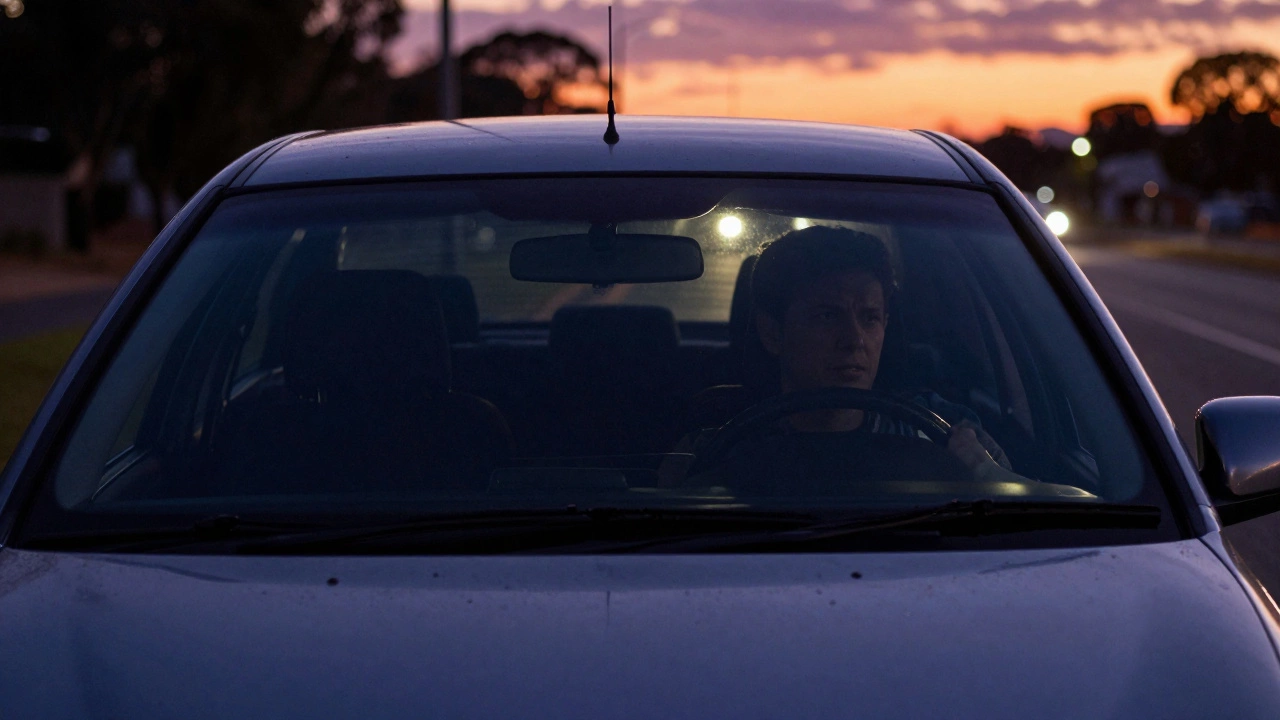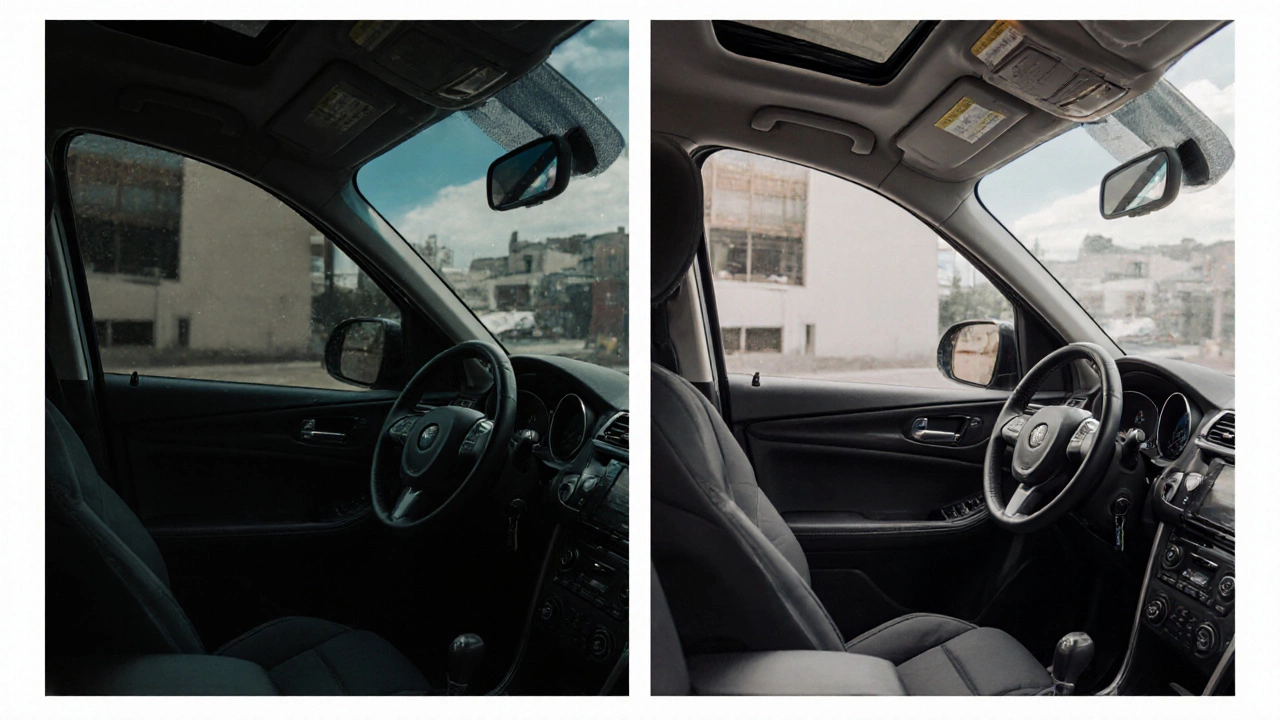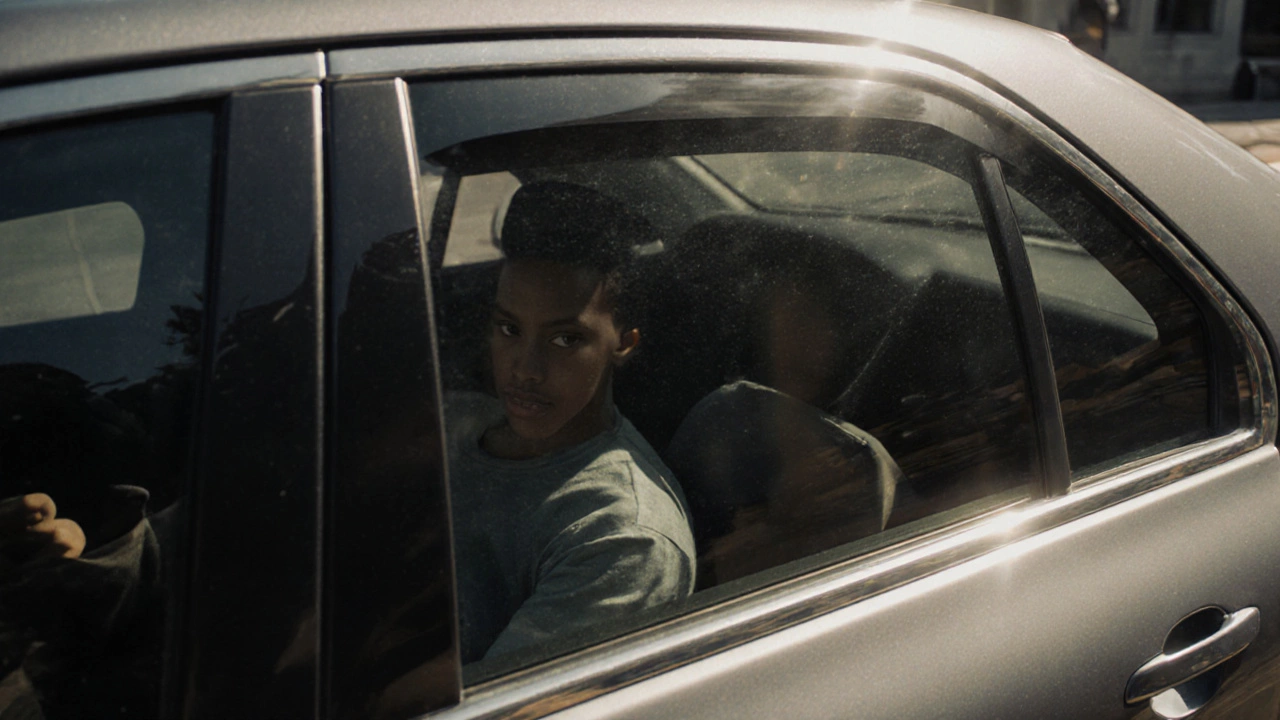When you add window tint to your car, you’re not just changing how it looks—you’re changing how it fits the law. Car tint laws, rules that define how dark your car windows can be for safety and visibility. Also known as window tint regulations, these rules exist because too much tint can block a driver’s view, especially at night or in bad weather. In the UK, the law doesn’t ban tint altogether, but it does draw a clear line: front side windows must let in at least 70% of light, and the windscreen must allow at least 75%. Anything darker than that is illegal for the driver’s main viewing areas.
It’s not just about the front. VLT limits, the percentage of visible light that passes through the glass. Also known as visible light transmission, this number is what police and MOT testers check with a special meter. If your tint drops below 70% on the front sides, you’re at risk of a fine, an MOT failure, or even being pulled over. Rear windows and the rear windscreen? No legal limit in the UK—but if your rear view is blocked by tint or obstructions, you can still be fined for unsafe driving. And here’s the catch: factory tint doesn’t get a free pass. Even if your car came with dark glass from the factory, if it’s below the legal limit, it’s still illegal to drive on UK roads.
Many people think aftermarket tint is the only problem, but it’s not. Some shops install tint that’s way too dark because they assume no one will check. Others sell "legal" tint that’s mislabeled. There’s no official certification sticker you can buy to make it okay. The only proof that matters is the test result from a certified VLT meter. And if you’re caught, you won’t just pay a fine—you’ll be ordered to remove the tint, which can cost you more than the original install.
What about SUVs and vans? Same rules apply. The law doesn’t care if your car is a hatchback or a 4x4. If it’s a road-registered vehicle, the front window rules are strict. Only medical exemptions (like severe light sensitivity) are accepted, and even then, you need a signed letter from a doctor and must keep it in the car.
Don’t assume that because you can see out, it’s legal. Tint can look fine to you but still be too dark for the law. A 5% tint might look like a cool night shade, but it’s 15 times darker than the legal limit for front windows. And while rear tint might be legal, if it makes your mirrors useless or forces you to roll down windows to see behind you, you’re still driving unsafely.
There’s no gray area here. The UK’s car tint laws are clear, simple, and enforced. You don’t need to be a legal expert to follow them—just know the numbers: 75% for the windscreen, 70% for front side windows. Everything else is optional, but only if it doesn’t block your view. If you’re thinking about tinting your car, test the film before you install it. Ask for a VLT certificate from the installer. And if you already have tint, don’t wait for a traffic stop—check it now.
Below, you’ll find real-world guides on window tint care, factory tint levels, and how to spot legal vs illegal film—so you can keep your car looking sharp without risking your license or your wallet.

A 20% window tint blocks 80% of light, making it very dark. While it looks stylish, it's illegal on front windows in Australia and reduces night visibility. A 35% ceramic tint offers better safety, legality, and heat control.

20% window tint is darker than 35%, blocking more light and heat-but it's not always legal or safe. Learn which percentage works best for your car, climate, and local laws.

35% tint lets in enough light to see through during the day, offering privacy without blocking visibility. It's legal on front windows in most Australian states and balances heat reduction, safety, and style.